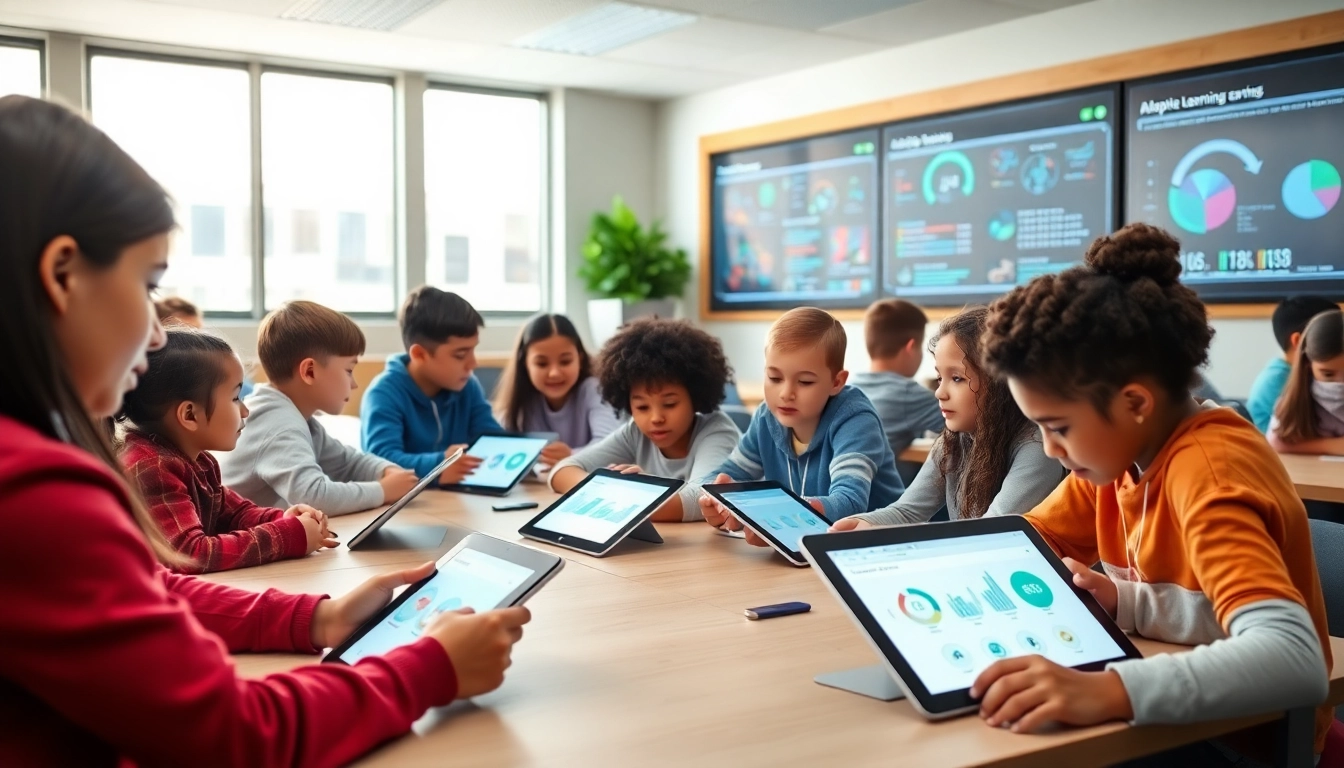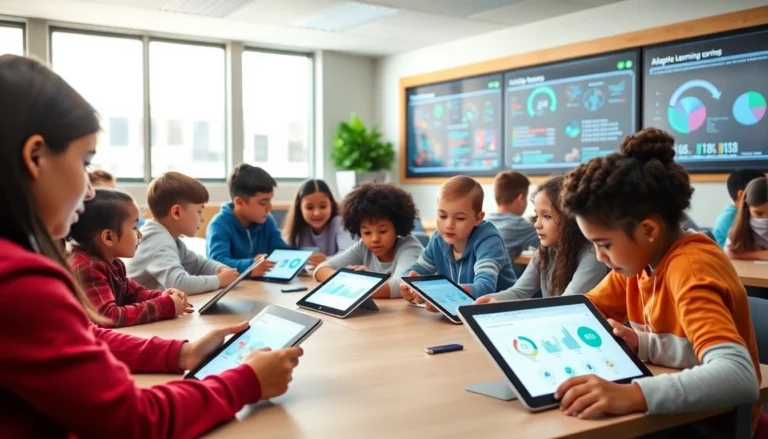
Understanding Adaptive Learning Design and Its Benefits
In today’s fast-evolving educational landscape, personalized learning experiences are no longer a luxury but a necessity. The foundation of this shift lies in adaptive learning design, a methodology that customizes instruction to meet the unique needs of each learner. Adaptive learning design leverages data-driven strategies to tailor lessons, activities, and assessments, fostering higher engagement and improved learning outcomes. By incorporating adaptive principles into educational content, educators can ensure that every student receives appropriately challenging material, addresses individual learning paces, and benefits from targeted support. This approach aligns with modern pedagogical goals—making learning more efficient, inclusive, and impactful.
Defining Adaptive Learning Design in Education
Adaptive learning design refers to the development of instructional materials and strategies that dynamically adjust based on learner interactions and performance data. Unlike traditional static curricula, adaptive systems personalize the educational journey by analyzing real-time responses and modifying content accordingly. For instance, when a student struggles with a concept, the system provides additional explanations, practice exercises, or alternative formats suited to their preferred learning style—seeing, hearing, or doing. Conversely, when mastery is demonstrated, the system accelerates the pace or introduces more complex challenges.
Key Characteristics of Effective Adaptive Learning Systems
- Personalization: Tailors learning pathways based on individual learner profiles and ongoing performance metrics.
- Data-Driven Decision Making: Utilizes analytics and AI to continuously monitor progress and inform instructional adjustments.
- Flexibility: Supports multiple learning modalities and adapts to diverse learner needs and contexts.
- Scalability: Capable of serving large numbers of learners without sacrificing personalization quality.
- Interactivity: Engages learners through varied activities, feedback, and assessments that respond to their input.
Impact on Student Engagement and Learning Outcomes
Implementing effective adaptive learning design dramatically boosts student motivation and retention. When learners receive content that is neither too easy nor too hard, they are more likely to stay engaged. Moreover, personalization ensures that learners focus on areas requiring improvement, reducing frustration and boredom. Studies show that adaptive learning can reduce study time by up to 30% while significantly improving mastery levels. For example, in higher education, adaptive systems have increased retention rates and pass rates by providing tailored support and immediate feedback, thereby fostering deeper understanding and confidence.
Implementing Adaptive Learning Design Strategies
Steps to Develop Personalized Learning Paths
- Assess Learner Needs and Baseline Data: Collect information on learners’ prior knowledge, preferences, and goals.
- Define Learning Objectives and Outcomes: Establish clear, measurable goals aligned with curriculum standards.
- Design Modular Content: Create granular lessons and activities that can be rearranged or customized.
- Implement Adaptive Algorithms: Use data analytics and AI to adjust content flow based on learner responses.
- Pilot and Gather Feedback: Test the system with a small group, analyze results, and refine accordingly.
- Scale and Continually Optimize: Roll out to larger audiences, leveraging analytics to improve personalization over time.
Integrating Data-Driven Instruction and Analytics
Data analytics are the backbone of adaptive learning. By tracking metrics such as quiz scores, time spent on tasks, and interaction patterns, educators can identify each learner’s strengths and gaps. Key performance indicators (KPIs) like mastery rates, engagement levels, and progression speed inform personalized interventions. Modern platforms integrate dashboards and AI insights, enabling real-time adjustments that optimize the learning experience. For example, if analytics reveal that a student repeatedly struggles with a specific concept, the system can automatically provide remedial content targeted at their difficulty.
Tools and Technologies for Seamless Implementation
Successful adaptive learning implementation depends on robust tools—Learning Management Systems (LMS), authoring platforms like Mexty, and AI-powered analytics engines. Platforms such as Mexty simplify the creation of SCORM-compliant, interactive content that adapts in real-time, allowing educators to focus on pedagogy rather than technical complexity. Integration with data analytics tools provides continuous insights, while AI algorithms help personalize content at scale. The convergence of these technologies enables a smooth, user-friendly experience for both content creators and learners.
Best Practices for Scalable Adaptive Learning Content
Designing Varied and Interactive Content for Different Learners
To maximize engagement and effectiveness, instructional content must be dynamic and multifaceted. Incorporating multimedia—videos, audio, animations, and simulations—addresses different learning styles. Interactive elements like quizzes, branching scenarios, and gamified activities foster active participation. When using platforms like Mexty, educators can easily remix and personalize content, ensuring each learner receives a tailored experience that resonates with their preferences and paces.
Balancing Personalization with Teaching Objectives
While personalization is crucial, it should not diverge from overall educational goals. Establish core competencies and essential skills as the backbone of your adaptive system. Use flexible modules that can be adjusted based on learner data but still adhere to curriculum standards. Regularly review analytics to ensure personalized pathways align with learning objectives and make adjustments when necessary.
Managing Workload and Ensuring Consistency
Scalable adaptive content demands streamlined workflows. Utilizing content authoring tools like Mexty reduces time and effort, allowing educators to remix existing resources rather than creating from scratch. Automating routine adjustments and feedback through AI minimizes manual grading and intervention. Maintaining consistency involves establishing clear content standards, quality checks, and continuous professional development for content creators.
Examples and Case Studies of Adaptive Learning Design in Action
Corporate Training Success Stories
Many leading corporations now use adaptive learning to accelerate employee onboarding and skills development. For instance, a global tech company implemented a personalized onboarding platform that tailors modules based on previous experience and role. As a result, new hires completed training 25% faster with higher retention rates and greater engagement. The system continuously adapts content complexity and provides just-in-time support, demonstrating how adaptive design enhances productivity and learner satisfaction.
Higher Education and K-12 Applications
Universities and K-12 schools are leveraging adaptive platforms like Mexty to individualize instruction. In higher education, adaptive systems help struggling students grasp fundamental concepts through tailored remedial modules, increasing retention. K-12 implementations often focus on meeting diverse learning needs within inclusive classrooms. For example, mathematics programs adapt problem difficulty and offer multiple representations, ensuring all students progress at their own pace.
Emerging Trends and Future Directions
The future of adaptive learning design points toward increased AI integration, predictive analytics, and immersive technologies such as AR/VR. These advancements will allow even finer customization and real-time responsiveness. Additionally, adaptive systems will expand beyond classroom settings into lifelong learning, corporate development, and social programs, making education more accessible and personalized than ever before.
Measuring and Optimizing Adaptive Learning Effectiveness
Key Performance Metrics and Feedback Loops
Continuous improvement hinges on robust metrics. Common KPIs include learner progress rates, time to mastery, engagement scores, and assessment performance. Regular surveys and feedback mechanisms help gather qualitative insights. Real-time dashboards enable instructors to identify trends, prevent bottlenecks, and tweak content for optimal results.
Continuous Improvement Based on Learner Data
Analysis of learner data facilitates iterative refinement. Platforms like Mexty automate content adjustments by tracking performance metrics and adapting lessons accordingly. This process closes the loop between instruction and assessment, ensuring personalized pathways effectively meet evolving learner needs.
Automating Content Adjustments for Better Outcomes
Automation reduces manual workload while maintaining high-quality instruction. AI-driven algorithms dynamically modify content difficulty, pacing, and delivery methods without constant manual intervention. This scalability ensures that personalized learning remains sustainable as learner populations increase.






